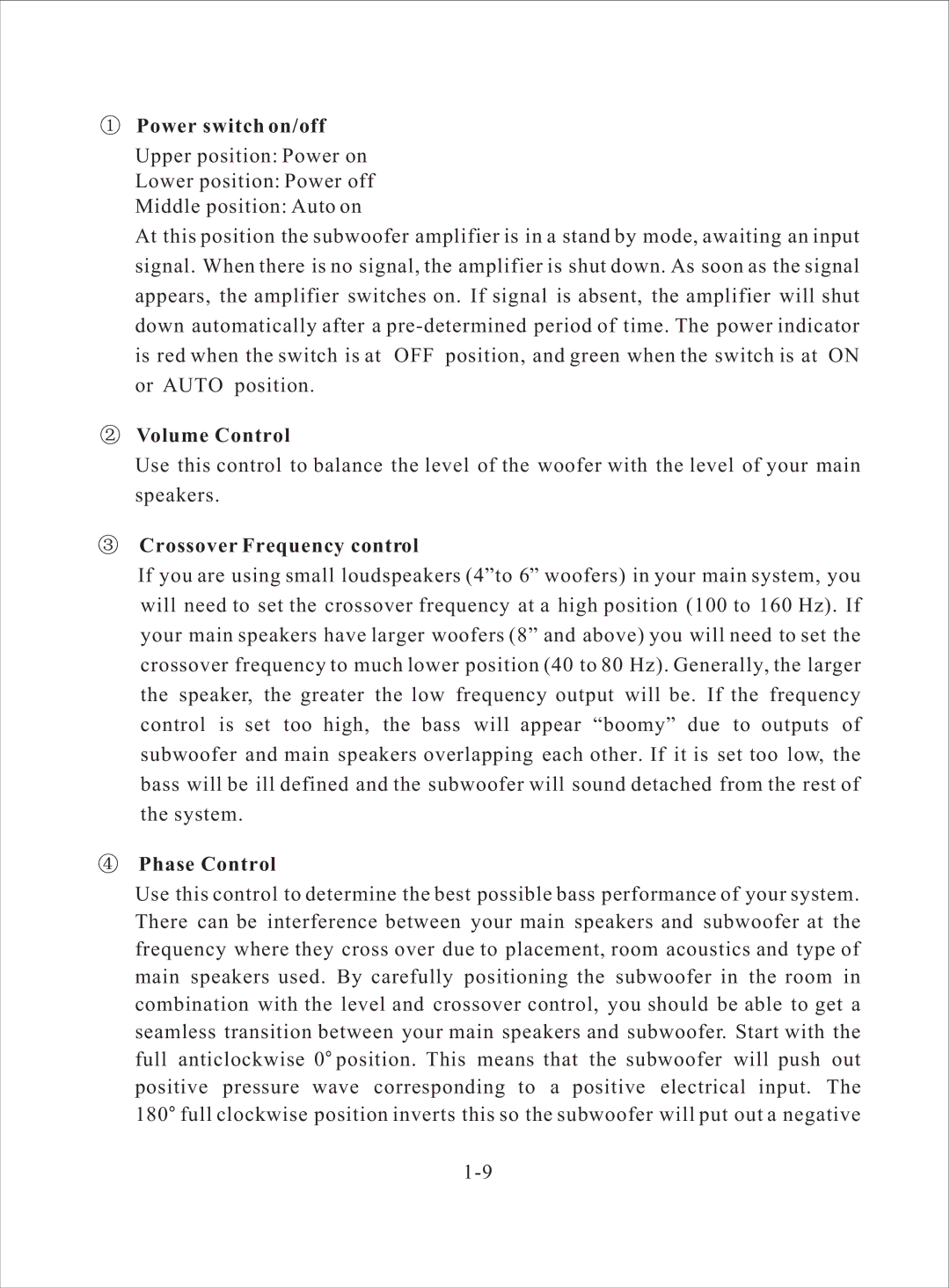
Power switch on/off
Upper position: Power on
Lower position: Power off
Middle position: Auto on
At this position the subwoofer amplifier is in a stand by mode, awaiting an input signal. When there is no signal, the amplifier is shut down. As soon as the signal appears, the amplifier switches on. If signal is absent, the amplifier will shut down automatically after a
Volume Control
Use this control to balance the level of the woofer with the level of your main speakers.
Crossover Frequency control
If you are using small loudspeakers (4”to 6” woofers) in your main system, you will need to set the crossover frequency at a high position (100 to 160 Hz). If your main speakers have larger woofers (8” and above) you will need to set the crossover frequency to much lower position (40 to 80 Hz). Generally, the larger the speaker, the greater the low frequency output will be. If the frequency control is set too high, the bass will appear “boomy” due to outputs of subwoofer and main speakers overlapping each other. If it is set too low, the bass will be ill defined and the subwoofer will sound detached from the rest of the system.
Phase Control
Use this control to determine the best possible bass performance of your system. There can be interference between your main speakers and subwoofer at the frequency where they cross over due to placement, room acoustics and type of main speakers used. By carefully positioning the subwoofer in the room in combination with the level and crossover control, you should be able to get a seamless transition between your main speakers and subwoofer. Start with the full anticlockwise 0 position. This means that the subwoofer will push out positive pressure wave corresponding to a positive electrical input. The 180 full clockwise position inverts this so the subwoofer will put out a negative
